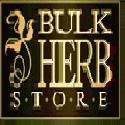
BLESSED THISTLE

ALSO KNOWN AS:
- Cnicus benedictus
- St. Benedict thistle
- holy thistle
flowers, leaves, stems
Beta-carotene, beta-sitosterol, cnicin, ferulic acid, kaempferol, luteolin, oleanolic acid, stigmasterol, calcium, essential fatty acids, iron, magnesium, manganese, phosphorus, potassium, selenium, silicon, zinc, vitamins B1, B2, B3, and C
ACTIONS & USES
Blessed Thistle stimulates the appetite and stomach secretions. This plant supports healing of the liver and can lessen inflammation and improve circulation. This action helps to cleanse the blood and strengthen the heart and the lungs. By improving the circulation, Blessed Thistle may act as brain food, improving and/or maintaining memory. This herb has a balancing effect on hormones, enriching and increasing milk production in nursing mothers. Encouraging improved circulation to every part of body, Blessed Thistle has been known to cause profuse perspiration.
CAUTIONS
Handle with care. Blessed Thistle can cause skin irritation. The flower heads are surrounded by spines.
Disclaimer: None of this is to be considered a substitute for medical examination and/or treatment. Use what you will, but do so knowing that you must consider your own circumstance and the application of these things with sound judgment.












0 comments:
Post a Comment
Post a Comment